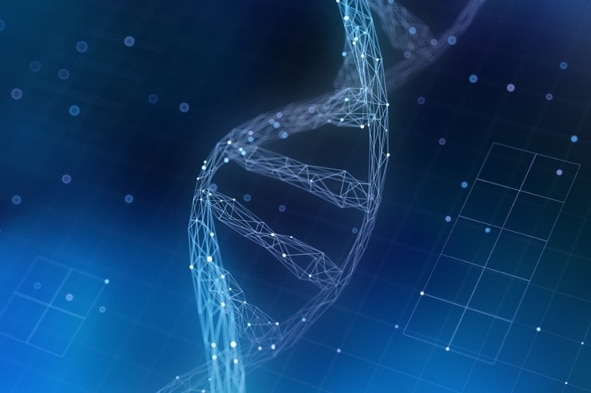Storing Data in DNA Brings Nature into the Digital Universe
Humanity is producing data at an unimaginable rate, to the point that storage technologies can’t keep up. Every five years, the amount of data we’re producing increases 10-fold, including photos and videos. Not all of it needs to be stored, but manufacturers of data storage aren’t making hard drives and flash chips fast enough to hold what we do want to keep. Since we’re not going to stop taking pictures and recording movies, we need to develop new ways to save them.
Over millennia, nature has evolved an incredible information storage medium – DNA. It evolved to store genetic information, blueprints for building proteins, but DNA can be used for many more purposes than just that. DNA is also much denser than modern storage media: The data on hundreds of thousands of DVDs could fit inside a matchbox-size package of DNA. DNA is also much more durable – lasting thousands of years – than today’s hard drives, which may last years or decades. And while hard drive formats and connection standards become obsolete, DNA never will, at least so long as there’s life.
The idea of storing digital data in DNA is several decades old, but recent work from Harvard and the European Bioinformatics Institute showed that progress in modern DNA manipulation methods could make it both possible and practical today. Many research groups, including at the ETH Zurich, the University of Illinois at Urbana-Champaign and Columbia University are working on this problem. Our own group at the University of Washington and Microsoft holds the world record for the amount of data successfully stored in and retrieved from DNA – 200 megabytes.
PREPARING BITS TO BECOME ATOMS
Traditional media like hard drives, thumb drives or DVDs store digital data by changing either the magnetic, electrical or optical properties of a material to store 0s and 1s.
To store data in DNA, the concept is the same, but the process is different. DNA molecules are long sequences of smaller molecules, called nucleotides – adenine, cytosine, thymine and guanine, usually designated as A, C, T and G. Rather than creating sequences of 0s and 1s, as in electronic media, DNA storage uses sequences of the nucleotides.
There are several ways to do this, but the general idea is to assign digital data patterns to DNA nucleotides. For instance, 00 could be equivalent to A, 01 to C, 10 to T and 11 to G. To store a picture, for example, we start with its encoding as a digital file, like a JPEG. That file is, in essence, a long string of 0s and 1s. Let’s say the first eight bits of the file are 01111000; we break them into pairs – 01 11 10 00 – which correspond to C-G-T-A. That’s the order in which we join the nucleotides to form a DNA strand.
Digital computer files can be quite large – even terabytes in size for large databases. But individual DNA strands have to be much shorter – holding only about 20 bytes each. That’s because the longer a DNA strand is, the harder it is to build chemically.
So we need to break the data into smaller chunks, and add to each an indicator of where in the sequence it falls. When it’s time to read the DNA-stored information, that indicator will ensure all the chunks of data stay in their proper order.
Now we have a plan for how to store the data. Next we have to actually do it.
STORING THE DATA
After determining what order the letters should go in, the DNA sequences are manufactured letter by letter with chemical reactions. These reactions are driven by equipment that takes in bottles of A’s, C’s, G’s and T’s and mixes them in a liquid solution with other chemicals to control the reactions that specify the order of the physical DNA strands.
This process brings us another benefit of DNA storage: backup copies. Rather than making one strand at a time, the chemical reactions make many identical strands at once, before going on to make many copies of the next strand in the series.
Once the DNA strands are created, we need to protect them against damage from humidity and light
Hi. I am a volunteer bot for @resteembot that upvoted you.
Your post was chosen at random, as part of the advertisment campaign for @resteembot.
@resteembot is meant to help minnows get noticed by re-steeming their posts
To use the bot, one must follow it for at least 3 hours, and then make a transaction where the memo is the url of the post.
If you want to learn more - read the introduction post of @resteembot.
If you want help spread the word - read the advertisment program post.
Steem ON!
Great article!